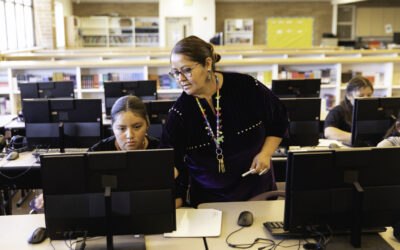There are four key types of computational thinking:
- Decomposition. Break the problem down into smaller, more manageable parts. In your daily life, this plays out in any activity where you break down the steps, such as throwing a birthday party by sending invitations, ordering a cake and decorating a room.
- Pattern Recognition. Analyze data and identify similarities and connections among its different parts. At a basic level, you use pattern recognition to match your clean socks from the laundry.
- Abstraction. Identify the most relevant information needed to solve the problem and eliminate the extraneous details. Abstraction, or generalization, is the basis of big ideas such as the Pythagorean Theorem or the law of supply and demand.
- Algorithmic Thinking. Develop a step-by-step process to solve the problem so that the work is replicable by humans or computers. A common example is a recipe: follow these steps and, voila, your favorite dish is served!
All of these aspects of computational thinking show up in our daily lives, as well as in the classroom. And not just in computer science, but in language, history, science, math, and art.
For example, students use decomposition to study a novel’s themes by first exploring its characters and setting. In studying art, they rely on pattern recognition to group artworks by their style and characteristics, such as impressionism or pointillism. Collecting survey data from classmates and then drawing conclusions and presenting their findings visually would be a form of abstraction. Describing a series of events that precipitated a major moment in history would be an example of algorithmic thinking.
As you can see, computational thinking provides formulaic processes that allow us to navigate complexity and stay focused on what is important without losing sight of the solution amongst all the noise. This ability to navigate complex information and to think in a way that complements technological processes is essential to preparing future-ready students.
So yes, computational thinking serves not only as a foundation for coding, and aids in powerful problem solving. But more than that, it provides a foundation for thinking creatively, and for pushing the boundaries of the possible.
To learn more about computational thinking, download the Ultimate Guide to Computational Thinking for Educators.

Christine Byrd
Author at Learning.com
Christine has over 17 years of experience as an award-winning writer, thorough researcher, detail-oriented editor, and communications strategist. She specializes in providing internal and external communications for corporate, academic and nonprofit leaders.
Further Reading
How Were the TEKS Created & What is Its Significance?
The Texas Essential Knowledge and Skills (TEKS) framework details the educational standards in the state of Texas, providing a comprehensive outline...
CIPA Compliance Made Easy with Learning.com
The Children’s Internet Protection Act (CIPA), enacted by Congress in 2000, addresses concerns about children’s access to harmful online content. It...
Students as Logical Thinkers: How Computer Science Teaches Real-World Skills
There is little debate that computer science education has become an imperative curriculum for future-ready students. From modern professions and...





